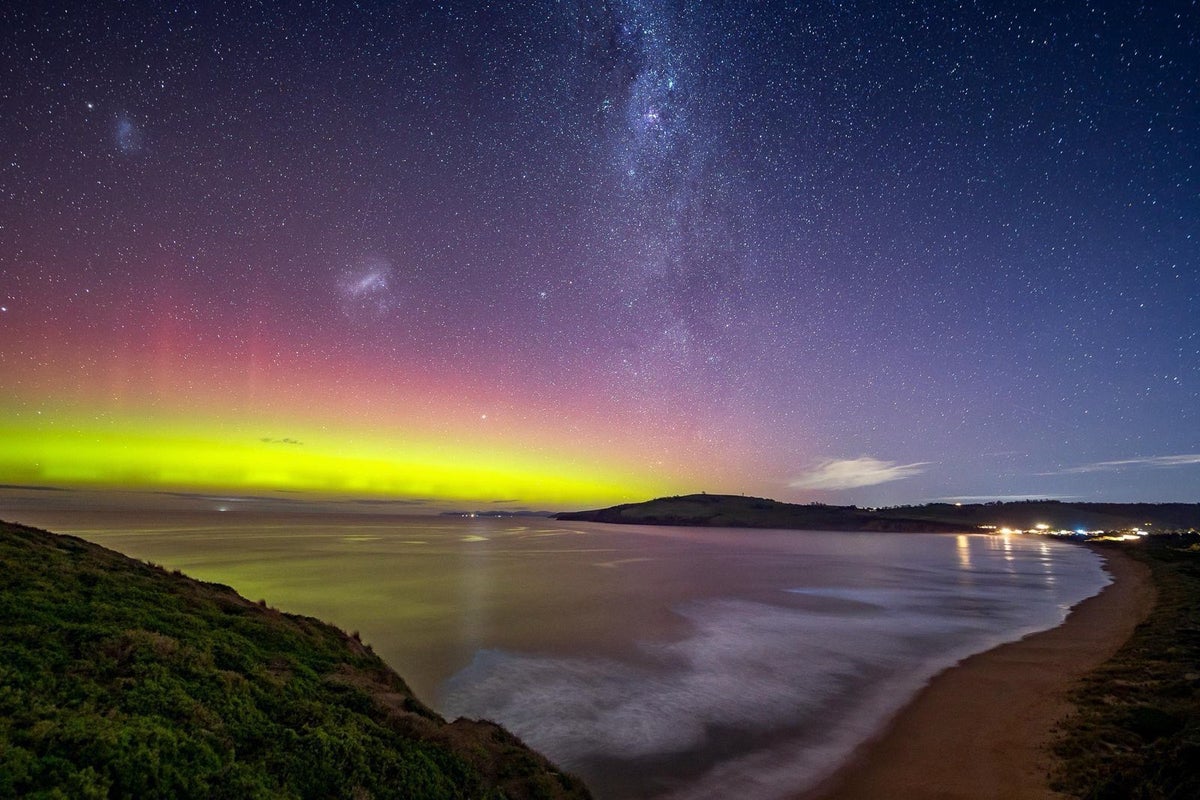
Support truly
independent journalism
Australians were treated to a dazzling display of southern lights on Tuesday following a powerful geomagnetic storm – and they may see more spectacular auroras tonight.
Auroras are caused when charged particles expelled from the Sun’s corona, known as coronal mass ejections, interact with the Earth’s magnetic field.
Since the Earth’s magnetic field is stronger near the poles, auroras are seen more distinctly in the skies above higher and lower latitudes.
The phenomenon is known as aurora australis in the southern hemisphere and aurora borealis in the northern hemisphere.
Australians took to social media to share pictures of the sky as pink, purple, yellow, and green lights sparkled in the dark.
Geomagnetic storms that cause auroras are denoted by the letter G and rated from 1 to 5, with 1 a minor event and 5 an extreme one.
G2 and G3 storms can interfere with power grids and lead to voltage fluctuations and solar storms of longer duration may even cause damage to transformers.
Tuesday’s aurora was the most vivid since May, when skygazers at even mid-latitudes could see the northern lights due to an intense solar storm.
Australian minister Julie Collins shared a photo of the aurora on X glowing in yellow and gold colour.
“Even the aurora australis last night turned out in green and gold for our Olympians!” Ms Collins said.
Australia’s Bureau of Meteorology said geomagnetic activity could make auroras visible in the country’s southern states from 29 to 31 July.
“Several coronal mass ejections may impact Earth within the next 24 hours, possibly causing G1 and G2 geomagnetic storming with a slight chance for G3,” the agency said.
“If geomagnetic activity does eventuate, aurora may be visible during local nighttime hours in Tasmania and southern Victoria on 31 July.”
Auroras could also be seen in the skies above Australia on 1 August, the bureau said, but at a “reduced probability”.
People in New South Wales and Western Australia, however, may miss out on the spectacle due to cloudy conditions, the agency said.







